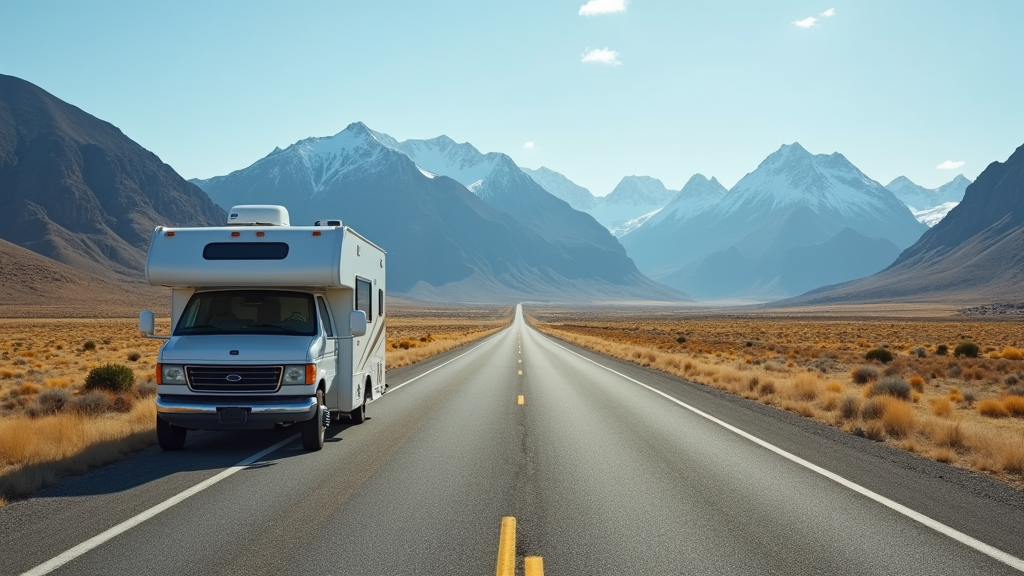RV travel during the day offers wide-open roads and good visibility, but it also presents certain dangers that can catch travelers off guard. I have experienced many challenges on the road, and I have learned that awareness and proper planning help me avoid many risks that might otherwise lead to serious consequences. This article breaks down the top dangers during daytime RV travel and offers guidance on how to maintain safety while enjoying the adventure.

Table of Contents
- Understanding the Risks of RV Travel During the Day
- Driving Challenges on a Heavy Vehicle
- Planning Routes for Safer Adventures
- Weather-Related Hazards
- Managing Mechanical Issues
- Addressing Security and Safe Parking
- Advanced Tips for Giving a Boost to RV Travel Safety
- Frequently Asked Questions
- Final Thoughts on RV Travel Day Dangers
Understanding the Risks of RV Travel During the Day
Traveling in an RV during daylight hours may seem safer because visibility is good. However, certain risks remain constant or even become more apparent when driving under the harsh glare of the sun. I have noticed that factors such as the vehicle’s size, environmental conditions, and unplanned stops can combine to create challenging scenarios on every trip.
When I travel, I review common dangers that can arise during the day. These include poor driving conditions due to the size and weight of the RV, finding your way through tight spaces and low clearances, weather-related hazards, mechanical failures, traffic issues in congested areas, and potential security concerns at rest stops or in parking areas that are not well lit. Each of these points deserves careful examination to avoid setbacks.
Driving Challenges on a Heavy Vehicle
One of the most significant issues with daytime RV travel is handling a large and heavy vehicle. Maintaining control of an RV requires adjustments in driving style and extra caution in situations that may seem routine in smaller vehicles.
The large size and heavy load mean I always ensure greater stopping distances. When merging lanes or taking turns on winding roads, the RV’s weight influences its maneuverability and response time. I always plan ahead and allow additional time for braking or adjusting course.
Height restrictions are another danger. Low bridges, overpasses, and even tree branches can present serious hazards. I rely on navigation tools that provide real-time data about height clearances, but I also keep a lookout while driving. Checking clearance before entering an area prevents unexpected collisions and potential damage.
Crosswinds can have a significant impact on an RV’s stability, particularly when driving at higher speeds on open highways. I find that strong gusts can play havoc with my control over the vehicle, making it crucial to reduce speed or hold the steering wheel firmly until conditions improve.
Large blind spots also add another layer of risk. RVs have much more substantial areas you cannot easily see. I compensate by double-checking mirrors and using additional assistance like backup cameras to ensure safe lane changes and merging maneuvers.
Mountain passes introduce additional hazards. Climbing steadily uphill can require slower speeds, and descending such routes can be dangerous if the grade exceeds a safe threshold. I make sure to factor in extra caution on steep grades, especially when towing a vehicle. Equipment like engine brakes or lower gears can help maintain control when going downhill.
Planning Routes for Safer Adventures
Effective route planning is a critical component of safe RV travel. I use RV-specific navigation tools that help me avoid restricted roads, low-clearance structures, and tight corners that are not suitable for a large vehicle. A favorite of mine is RV Trip Wizard. This last consideration is essential when planning trips in urbanized or heavily developed areas.
Modern GPS systems designed for RVs offer a way to check for weight and height limitations along the route. I use the RV 890 from Garmin. I frequently review maps that indicate roads best suited to RV travel, keeping an eye out for narrow lanes or streets with unpredictable traffic.
Traffic conditions can change quickly, especially in urban settings during peak times. I try to avoid heavily congested areas by planning my adventures to take less-traveled routes during off-peak times. This not only eases stress on the driver but also reduces the risk of accidents caused by abrupt stops or lane changes in busy conditions.
Weather-Related Hazards
The weather can present several dangers during RV travel even on a clear day. I find that severe storms, flash floods, and extreme temperature variations are factors that must be considered before I hit the road.
Severe storms can undermine even the best-planned trips. It is important to monitor weather forecasts closely. Heavy rain or high winds can make driving conditions hazardous. During times of intense weather activity, I may delay my departure or choose a safer route, even if it adds extra travel time.
Extreme temperatures pose another risk for both my health and the vehicle’s functionality. High temperatures can affect tire pressure and may lead to overheating components, while very cold weather can cause issues like frozen fluid levels. I prepare for both extremes by ensuring that my RV is well-maintained and equipped with the required cooling or heating systems. I would say, don’t plan a trip near Death Valley in the summer.
Managing Mechanical Issues
Even with thorough preparations, mechanical issues can interrupt an adventure at any time. I have learned to treat the RV’s performance as something that requires constant monitoring.
Checking tire pressure is an ongoing task when I travel. Incorrect tire pressure can lead to poor fuel efficiency, tire wear, or even blowouts. I carry a portable gauge and check the pressure before setting off on long stretches of road.
Maintaining fluid levels is equally important. I review engine oil, coolant, and other vital fluids before and during my adventure. Keeping these checks routine helps me avoid sudden breakdowns and ensures that the engine performs consistently well.
An emergency roadside kit is something I never leave behind. The kit includes tools and supplies necessary to handle minor repairs or adjustments. Items like spare fuses, a tire repair kit, flashlights, and practical hand tools contribute to my readiness for unexpected malfunctions or minor accidents. A well-stocked kit gives me peace of mind knowing that I can address problems without needing immediate assistance.
Addressing Security and Safe Parking
While the daylight hours offer better visibility, security remains a concern for RV travelers. Many times, I have observed that safe parking and security measures become as important as technical checks before starting an adventure.
Parking lot safety is something I take seriously. I prefer to park in well-lit, reputable locations, especially when resting overnight. Well-lit parking lots or secure campgrounds help ease up on the risk of theft or vandalism. Even during daytime stops, selecting secure locations reduces the risk of minor security issues.
I also treat the storage of valuables with caution. When I park the RV, I store valuables in a locked, opaque container rather than leaving them visible. This practice minimizes the temptation for potential theft and ensures that my belongings are safer when I am not around.
Observing campground surroundings is a habit that I have developed over time. Some campgrounds may raise security concerns if they are sparsely populated or not monitored adequately. Staying aware of the immediate environment and reporting any unusual activity helps maintain a secure travel experience.
Advanced Tips for Giving a Boost to RV Travel Safety
As I become more experienced on the road, I have compiled additional safety tips to give a boost to my travel experience. These advanced measures help ease up on risks beyond the basic precautions.
Using RV-specific navigation apps remains one of my favorite strategies. These tools provide real-time updates on road restrictions, traffic conditions, and weather alerts that are specific to large vehicles. With this information, I can adjust my route immediately if needed.
Another tip is to periodically update the safety features of the RV. Advances in technology have introduced systems that monitor tire pressure, engine performance, and even driver alertness. Although these upgrades may represent an added cost, they contribute to a safer travel experience over time.
I also believe that continuous learning about road safety is beneficial. I spend time reading reviews and safety reports relating to RV travel. These resources provide insight into common breakdown issues, accident causes, and the best practices developed by experienced RV travelers.
Lastly, having a detailed itinerary that includes alternative routes provides flexibility. Knowing that I have options helps me deal with sudden changes in weather or unexpected road hazards without undue stress.
Frequently Asked Questions
Below are some questions I have encountered over the years, along with my straightforward answers to help guide safe RV travel during the day.
Question: What is the main danger when traveling by RV during the day?
Answer: The primary danger involves the RV’s driving challenges. The size and weight of the vehicle mean longer stopping distances, higher risk on tight corners, and more significant issues on roads with low clearances or heavy crosswinds.
Question: How can I plan my route to avoid low clearances and restricted roads?
Answer: It is helpful to use RV-specific GPS systems and tools like RV Trip Wizard from RV Life. These tools offer details on height limitations, restricted routes, and better alternatives to avoid difficult areas. Also, reviewing maps in advance can highlight potential hazards.
Question: What precautions should be taken for weather-related hazards?
Answer: Monitoring weather forecasts continuously is very important. Avoid driving during severe storms, and consider alternate routes if flash flood warnings are issued. Preparing the RV for extreme temperatures with proper maintenance practices is also beneficial.
Question: How do I handle mechanical issues on the road?
Answer: Regular maintenance is key. I always check tire pressures, fluid levels, and ensure that the emergency roadside kit is fully stocked before setting off on any long trip.
Question: What is a useful tip for enhancing security during stops?
Answer: Choosing well-lit and secure parking areas for overnight stops helps. Also, securing valuables out of sight and staying aware of the surroundings are very important practices to reduce security risks.
Final Thoughts on RV Travel Day Dangers
The freedom that comes with RV travel is inviting and offers a sense of adventure that many of us enjoy. However, every adventure requires respect for the vehicle’s capabilities and attention to the inherent dangers on the road. I have learned that proper route planning, vehicle checks, and ongoing learning about travel safety measures contribute to a safer experience.
From understanding the challenges of driving a heavy vehicle to managing weather-related hazards and routine mechanical inspections, each step plays a role in ensuring a secure trip. Security concerns, such as parking in well-lit, reputable spots and protecting your belongings, are also an important part of safe travel.
Taking the time to prepare and being mindful of these risks helps avoid unforeseen issues. I rely on technology, review my vehicle’s limitations, and continuously educate myself on emerging safety recommendations. With the right precautions, enjoying the freedom of the open road becomes not only possible but also reliably safe.
Whether you are a new RV traveler or a seasoned veteran, I find that consistently applying these safety practices makes all the difference. Enjoy the ride, plan carefully, and let every travel experience enrich your adventure with confidence and care.
Check out the Mountain Directory for maps and info about mountain passes in the US.
About the Author
Jim has 3.5 years of experience living and traveling full-time in an RV. From “moochdocking” with family and friends to navigating the financial intricacies of RV life, he shares practical advice rooted in firsthand experience. His goal is to help fellow adventurers embrace the RV lifestyle with confidence and ease.
This post contains affiliate links. If you make a purchase through these links, I may earn a commission at no extra cost to you.


This article is packed with valuable insights on RV travel safety! The section on managing crosswinds was particularly interesting—those gusts can be intense on open highways. Have you found any specific techniques or tools that help stabilize an RV in windy conditions? Also, what’s your go-to emergency roadside kit must-have? Always looking for good travel tips!
Thanks for your comment! Crosswinds can definitely be a challenge on open highways. I’ve found that reducing speed, keeping a firm but relaxed grip on the wheel, and adjusting travel plans to avoid high-wind conditions when possible are key strategies. Some RVers also use steering stabilizers or heavier-duty sway bars for added control.
As for an emergency roadside kit, my must-have is a quality tire pressure monitoring system (TPMS)—it’s a game-changer for preventing blowouts. I also carry a portable air compressor, road flares or LED beacons, and a multi-tool. Safe travels!
Very interesting article. My husband and I have started RVing not for pleasure but for work assignments in the construction industry. As his partner on these trips, I am quickly learning the various driving challenges you discussed and how to navigate them. I’ll be following more of your posts to make our trips not only a necessity, but fun also.
Thank you for your kind words! RVing for work comes with its own unique challenges, but it’s great to hear you’re learning to navigate them. I hope my posts help make your travels smoother and even add some fun along the way. Safe travels, and I’d love to hear more about your experiences on the road!